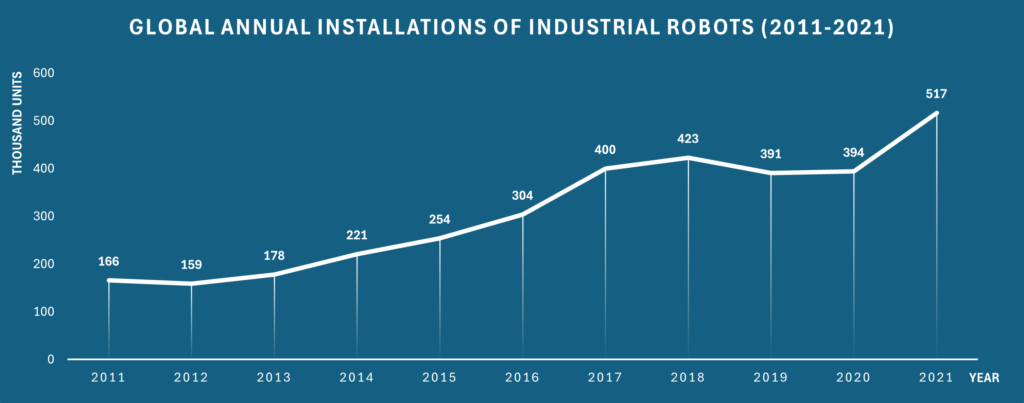
The rise of Industry 4.0 has led to robotics technology and 3D machine vision systems becoming increasingly critical in global manufacturing. According to Statzon’s report Robots Everywhere: A Comprehensive Market Guide for Robotics Enthusiasts, the integration of automation and robotics is driving transformations across various sectors, including industry, health care, and logistics.
Specifically, according to a recent study report published by Market Research Future, the 3D Machine Vision market is expected to experience significant growth by 2030 thanks to its exceptional performance in enhancing production efficiency, improving product quality, and reducing labor costs.
The size of 3D Machine Vision is expected to grow at a phenomenal compound annual growth rate (CAGR) through 2030 according to Market Research Future report Global 3D Machine Vision Market Research Report: Forcast to 2030. The demand for automated quality control systems is being driven by the increasing need for manufacturers to improve product quality and reduce costs.
Machine vision systems can help to automate the inspection of products for defects, which can save manufacturers time and money. The company uses cameras like M4 Mega, a TOF camera from MRDVS to track inventory and manage storage.
The automotive industry is a major user of machine vision systems. Machine vision is used in various automotive applications, such as obstacle avoidance, inventory tracking, and pallet recognition. The market will be valued at $6.43 billion in 2023, and it is expected to expand at a CAGR of 13.9% from 2024 to 2030. MRDVS provides 3D machine vision solutions, specializing in equipping mobile robots with 3D Machine Vision and AI. Furthermore, MRDVS has equipped over 12,000 robots with their cutting-edge 3D vision sensors.

Data from Statzon/IFR
At the same time, the growth of the Robot Market is promising. The 2023 report from the International Federation of Robotics (IFR) reveals that over half a million industrial robots were installed in 2021, setting a new all-time high and surpassing the pre-pandemic installation record. The number of global annual installations of industrial robots increased steadily from around 166 thousand units in 2011 to 517 thousand units in 2021.
The robotics industry is still relatively young but has already achieved remarkable progress.
According to MarketsandMarkets, the global industrial robots market was valued at around $42.1 billion in 2021. The market is anticipated to grow at a CAGR of 12.3% due to several driving factors, including the increasing demand for automation, rising human labor costs, strong governmental support, and significant advancements in research and development.
According to a report by Orion Market Research, the field of 3D machine vision is benefiting from ongoing developments in related technologies such as artificial intelligence and machine learning. The machine learning as a service market, which complements machine vision applications, is expected to grow at an impressive CAGR of 35% during the forecast period.

3D machine vision is being increasingly adopted across diverse sectors, including manufacturing, automotive, and aerospace. For instance, the aerospace robotics market, which often utilizes 3D machine vision, is projected to grow from $2.66 billion in 2019 to $48.39 billion by 2032.
Furthermore, 3D machine vision is likely to be increasingly integrated with other emerging technologies, such as 3D radar systems, which are also experiencing significant market growth and technological advancements.
A Fortune Business Insights report for 2023 mentions that smart robots are an upcoming trend as robots are linked with AI and IoT-based systems. As an innovation-driven technology company, MRDVS introduced several TOF cameras and ceiling-vision SLAM solutions, combining 3D TOF cameras with machine vision. Their self-developed obstacle avoidance algorithms ensure smooth navigation across multiple AGV mounting points, providing a broad view for efficient collision avoidance ready-to-use.

In conclusion, the integration of 3D machine vision and robotics into various industries marks a significant advancement in the realm of automation, driven by the imperatives of Industry 4.0. Concurrently, the robotics industry is experiencing an unprecedented surge. The convergence of advanced technologies such as AI, IoT, and machine learning is further accelerating the adoption and evolution of 3D machine vision and robotics, making them indispensable tools for modern manufacturing and industrial processes. As these technologies continue to evolve, their integration promises to drive significant advancements and efficiencies, reinforcing their pivotal role in the future of global manufacturing and beyond.
©Copyright 2023 Zhejiang MRDVS Technology Co.,Ltd.
浙ICP备2023021387号-1